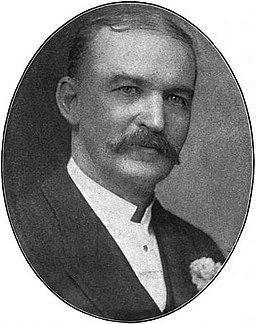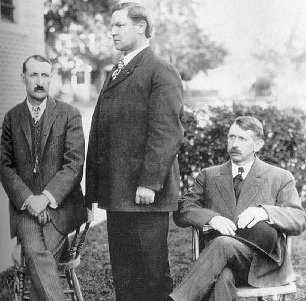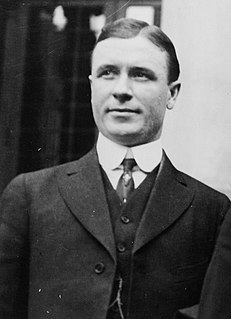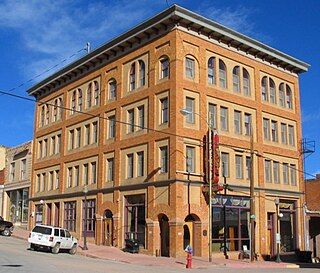
Cripple Creek is the Statutory City that is the county seat of Teller County, Colorado, United States. The city population was 1,189 at the 2010 United States Census. Cripple Creek is a former gold mining camp located 44 miles (71 km) southwest of Colorado Springs near the base of Pikes Peak. The Cripple Creek Historic District, which received National Historic Landmark status in 1961, includes part or all of the city and the surrounding area. The city is now a part of the Colorado Springs, CO Metropolitan Statistical Area.

The Ludlow Massacre emanated from a labor conflict: the Colorado National Guard and Colorado Fuel and Iron Company guards attacked a tent colony of 1,200 striking coal miners and their families at Ludlow, Colorado, on April 20, 1914, with the National Guard using machine guns to fire into the colony. Approximately twenty-one people, including miners' wives and children, were killed. The chief owner of the mine, John D. Rockefeller, Jr., was widely excoriated for having orchestrated the massacre.

James Hamilton Peabody was the 13th and 15th Governor of Colorado, and is noted by some for his public service in Cañon City and by others for his brutality in crushing the miner's strike in Cripple Creek in 1903-4.

Charles H. "Charlie" Moyer was an American labor leader and president of the Western Federation of Miners (WFM) from 1902 to 1926. He led the union through the Colorado Labor Wars, was accused of murdering an ex-governor of the state of Idaho, and was shot in the back during a bitter copper mine strike. He also was a leading force in founding the Industrial Workers of the World, although he later denounced the organization.

The Cripple Creek miners' strike of 1894 was a five-month strike by the Western Federation of Miners (WFM) in Cripple Creek, Colorado, USA. It resulted in a victory for the union and was followed in 1903 by the Colorado Labor Wars. It is notable for being the only time in United States history when a state militia was called out in support of striking workers.
John Calderwood was an American miner and labor union leader. He was born in Kilmarnock, East Ayrshire, Scotland.

Frank J. Hayes was an American miner and president of the United Mine Workers of America (UMWA) from 1917 to 1919. A Democrat, he also served as Lieutenant Governor of Colorado in 1937–39.

The American Labor Union (ALU) was a radical labor organization launched as the Western Labor Union (WLU) in 1898. The organization was established by the Western Federation of Miners (WFM) in an effort to build a federation of trade unions in the aftermath of the failed Leadville Miners' Strike of 1896. The group changed its name from WLU to the more familiar ALU moniker in 1902 at its fifth annual convention. The group had a peak membership of about 43,000 — of which 27,000 were members of the WFM. The ALU was a precursor to the Industrial Workers of the World (IWW), established in 1905, which effectively terminated it.

Emma Florence Langdon was born in Tennessee in 1875. She moved to the gold mining district of Cripple Creek, Colorado in 1903. She was an apprentice linotype operator who wrote that "women's place should be in the home and not in public life." In spite of such sentiments, she played a very visible role during some very turbulent times. She and her husband were working at the Victor Daily Record, a pro-union newspaper, during a 1903-04 strike of miners in the Cripple Creek gold fields that erupted into the Colorado Labor Wars. Along with many other union sympathizers, Langdon was forced to leave in 1904, and moved to Denver.
Citizens' Alliances were state and local anti-trade union organizations prominent in the United States of America during the first decade of the 20th century. The Citizen's Alliances were closely related to employers' associations but allowed participation of a broad range of sympathetic citizens in addition to those employers apt to be affected by strikes. Originating in the American state of Ohio as the "Modern Order of Bees," the Citizens' Alliance movement spread westwards, playing a particularly important role in labor relations in the states of Colorado and California. Citizens' Alliance groups often worked in tandem with smaller but better financed employers' organizations interested in establishing or maintaining open shop labor conditions, including the Mine Owners' Associations (MOA) or the National Association of Manufacturers (NAM).
The Leadville miners' strike was a labor action by the Cloud City Miners' Union, which was the Leadville, Colorado local of the Western Federation of Miners (WFM), against those silver mines paying less than $3.00 per day. The strike lasted from 19 June 1896 to 9 March 1897, and resulted in a major defeat for the union, largely due to the unified opposition of the mine owners. The failure of the strike caused the WFM to leave the American Federation of Labor (AFL), and is regarded as a cause for the WFM turn toward revolutionary socialism.
The November 1897 proclamation of the State Trades and Labor Council of Montana was a reflection of western labor's assessment of the struggle between labor and capital after the failed Leadville Colorado, Miners' Strike. The proclamation, and the impetus behind it had a significant impact on the labor movement in the United States, Canada, and other countries for a period of several decades.

The Coeur d'Alene, Idaho, labor strike of 1892 erupted in violence when labor union miners discovered they had been infiltrated by a Pinkerton agent who had routinely provided union information to the mine owners. The response to that violence, disastrous for the local miners' union, became the primary motivation for the formation of the Western Federation of Miners (WFM) the following year.

Adjutant General Sherman M. Bell was a controversial leader of the Colorado National Guard during the Colorado Labor Wars of 1903-04. While Bell received high praise from Theodore Roosevelt and some others, he was vilified as a tyrant by the leadership and the miners of the Western Federation of Miners (WFM).

Fort Peabody was a military post in southwestern Colorado, situated at 13,365 feet elevation on the county line between Ouray and San Miguel Counties, making it the highest historical post of its kind in the United States. It was added to the National Register of Historic Places on March 30, 2005 as significant to the state and nation's labor history.
The Idaho Springs miners strike of 1903 was a labor strike by members of the Western Federation of Miners (WFM) against gold mines in the vicinity of Idaho Springs, Colorado. It is one of the strikes of 1903-1904 that are collectively known as the Colorado Labor Wars. The union demanded a reduction in the working day to eight hours, without a corresponding reduction in pay. The strike began on 1 May 1903, and was called off on 1 September 1903. The strike is noted for a dynamite attack on the Sun and Moon mine, and the forcible deportation of 19 union officials and union members from the area.















